L G B T I Q A + Flags
There are a lot of different flags that people use to show that they are L G B T I Q A +. Here is some information about the flags you will see the most in the community.
The L G B T I Q A + community has a lot of colourful flags that show how many fabulous and diverse people are in the community. Most of the flags have changed since they were first made, and some might change in the future.
This page shows you some of the types of rainbow flags, identity flags, and sexuality flags that you might see.
There is an image of each flag, and a short description of what the flag means.
There is also a short history of how the rainbow flag has changed since it was first made.
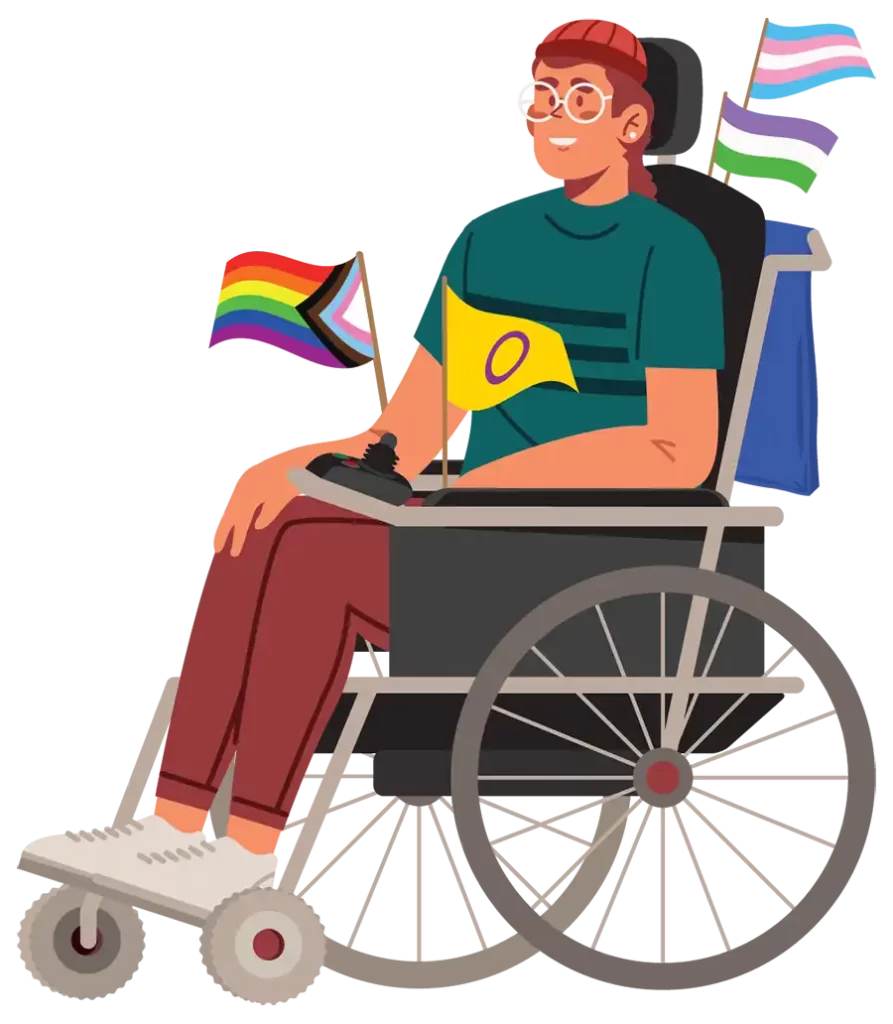
These flags are for the whole L G B T I Q A + community.
Pride Flag (or Rainbow Flag)
The pride flag is also called the rainbow flag. It is the most common L G B T I Q A + flag used around the world.
It was made so that L G B T I Q A + people had something that they could show or wear with pride.
There are a lot of colours on the flag to show that there are a lot of different people in the L G B T I Q A + community.
The pride flag shows everybody how great the L G B T I Q A + community is.
The pride flag helps people show love for the L G B T I Q A + community and celebrate being together.
There have been a lot of rainbow flags since the first one. There is a history of the rainbow flags at the end of this webpage.
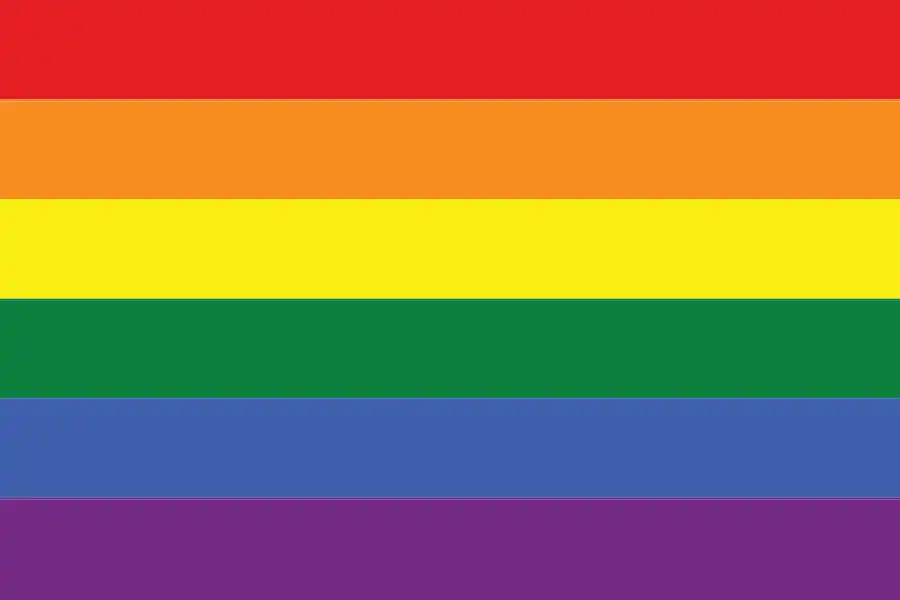
Progress Pride Flag
The Progress flag is almost the same as the pride flag, but there are some extra colours. A triangle of white, pink, blue, brown and black was added on the left of the flag.
After 40 years, the L G B T I Q A + community decided that the flag needed an update. They wanted to include more people.
The flag adds the colours white, pink, and blue to make sure that Trans people are included.
The flag adds the colours brown and black to make sure that people of colour feel included.
There have been a lot of rainbow flags since the first one. There is a history of the rainbow flags at the end of this webpage.
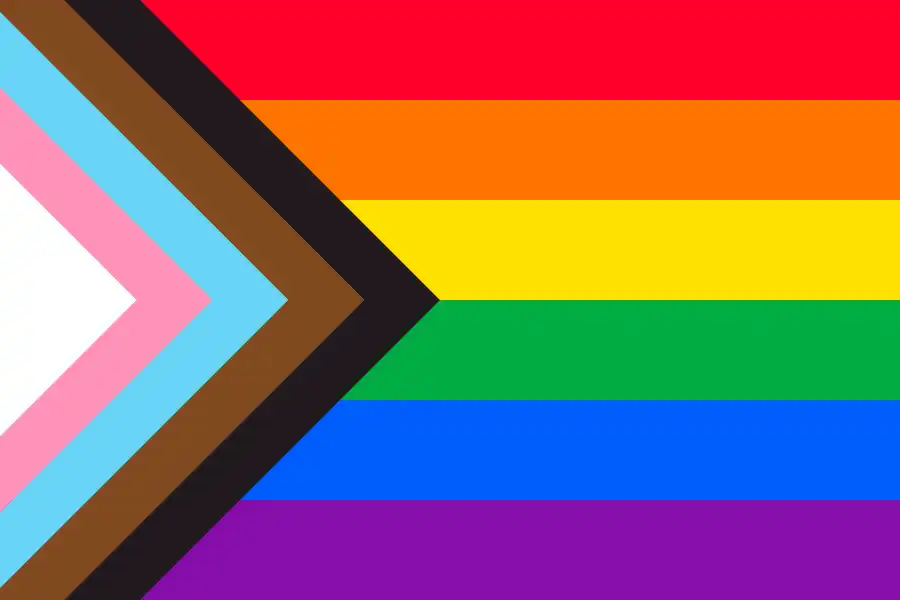
Unity Pride Flag
The Unity flag was made after the Progress flag.
This flag has included yellow and a purple circle to make sure that people who are Intersex feel included.
There have been a lot of rainbow flags since the first one.
There is a history of the rainbow flags at the end of
this webpage.
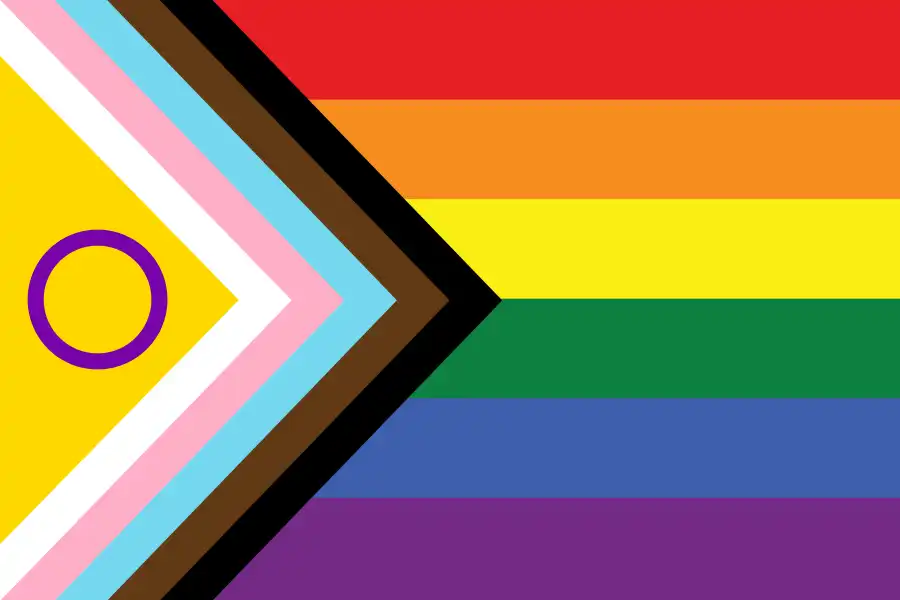
These flags have been made for L G B T I Q A + people to show your identity, gender, or sexuality.
With these flags you can show or wear your own colours and be proud of who you are.
Trans Flag
The Trans flag is for people who are transgender.
This flag has five (5) stripes.
The five (5) stripes are the same when the flag is upside down. The person who designed the flag wanted to make sure that the flag was always correct. There is no ‘wrong’ way to show this flag.
The blue on the flag is for Men.
The pink on the flag is for Women.
The white on the flag is for people who are not Men or Women, and people who are transitioning from one gender to another.
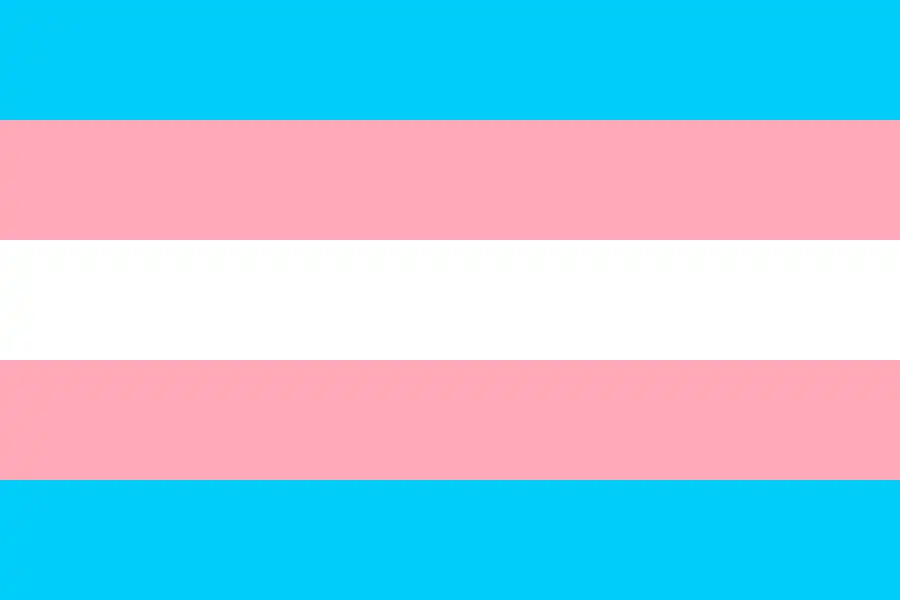
Bisexual Flag
The Bisexual flag is for people who are attracted to two or more genders.
This flag has 3 stripes:
The pink on the flag is for people who are attracted to people that are the same gender.
The purple on the flag is for people who are attracted to two or more genders. Purple is the colour that is made when you mix blue and pink.
The blue on the flag is for people who are attracted to people that are a different gender.
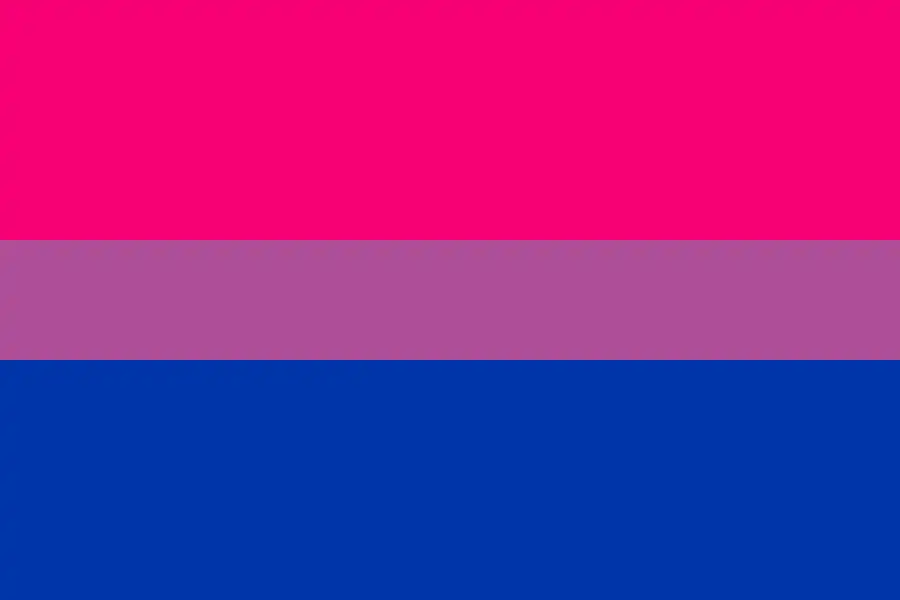
Asexual Flag
The Asexual flag is sometimes called the Ace Flag. This flag is for people who do not feel sexual attraction.
This flag has four (4) stripes.
The black on the flag is for asexuality, or not feeling sexual attraction.
The grey on the flag is for people who do not feel asexual, but also do not feel sexual.
The white represents sexuality, or feeling sexual attraction.
The purple represents community.
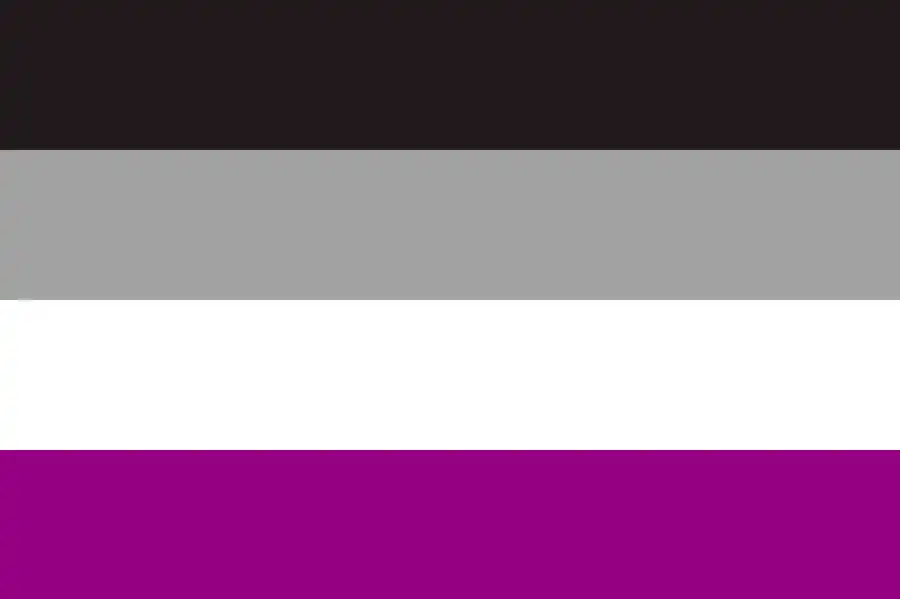
Intersex Flag
The Intersex flag is for people who are intersex.
This flag is very different to the other flags. This is because other flags did not show the experience of intersex people well.
The yellow on the flag has two (2) meanings:
Yellow is bright, and stands out as different to other L G B T I Q A + flags
In the past, yellow was used in a bad way for people who are intersex. The person who designed the flag wanted to use a bright yellow to show that intersex people are proud of who they are.
The purple circle on the flag shows everyone that, like a circle, intersex people are complete and not broken. The circle shows that intersex people have the right to make their own choices about their bodies.
The flag was made by Morgan Carpenter from Intersex Human Rights Australia (IHRA).
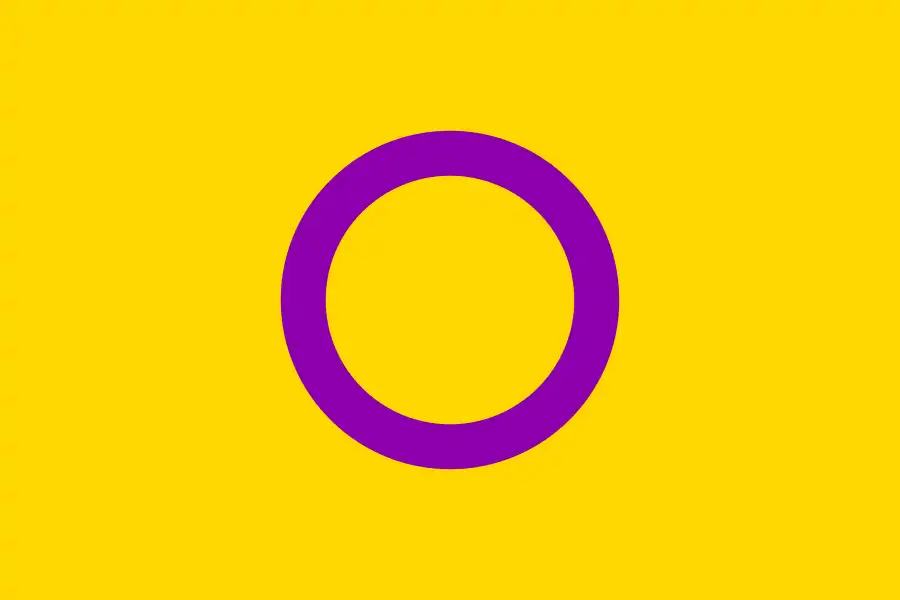
Lesbian Flag
The Lesbian flag is for lesbians. This means women who are attracted to other women.
This flag has five (5) stripes.
The red on the flag is for all women. This includes women who do not act the way our society tells them to. It also includes women who do not feel very feminine.
The light orange on the flag is for community.
The white on the flag is for gender nonconformity. This is about people being free to live and act the way they want to. It means not acting the way society tells women to act.
The light pink on the flag is for freedom.
The dark pink on the flag is for love.
There are many other lesbian flags. This flag is very new but also very popular.
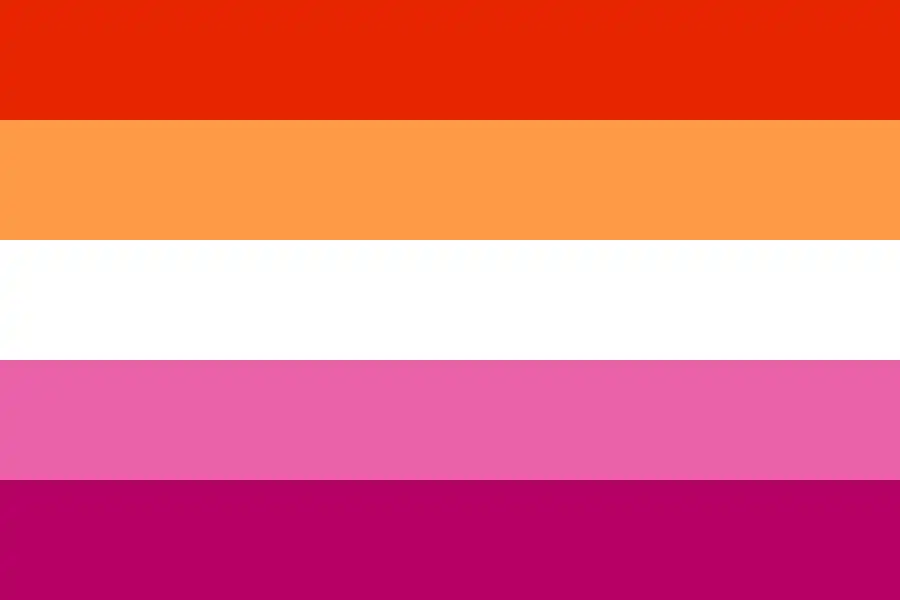
Non-Binary Flag
The Non-Binary flag is for people who are non-binary. People who do not feel like a man or a woman, or feel like both a man and a woman.
This flag has four (4) stripes.
The yellow on the flag is for people who are a gender that is not male or female.
The white on the flag is for all genders. When you mix all colours in the rainbow, it makes white.
The purple on the flag is for both male and female. When you mix blue (for male) and pink (for female), it makes purple.
The black on the flag is for agender, or no gender. Black is the opposite of white.
Some non-binary people choose to use the genderqueer flag.
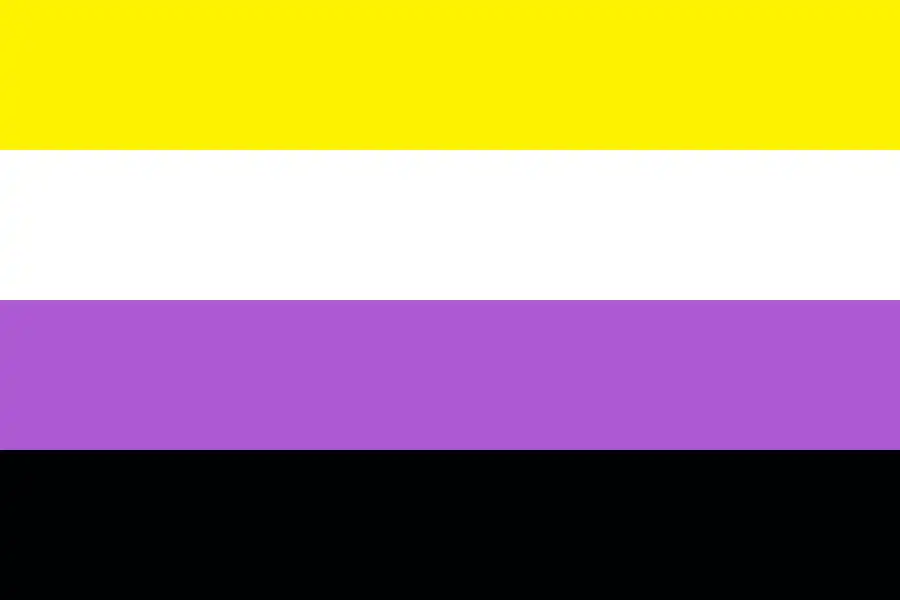
Genderqueer Flag
The Genderqueer flag is for genderqueer people. People who do not feel like a man or a woman, or feel like both a man and a woman. It also includes anyone who is not cisgender, or doesn’t look like the sex they were assigned at birth.
This flag has three (3) stripes.
The purple on the flag is for androgyny and queer. Androgyny is when a person looks like they might be both male or female. It is more about how someone looks or wants to look.
The white on the flag is for agender. Agender is when a person does not feel like they have a gender. They don’t feel male or female – and they may not feel non-binary.
The green on the flag is for people who are not men or women. They are outside of the binary of gender. Binary means only thinking about gender in two ways – male and female.
Some genderqueer people choose to use the non-binary flag.
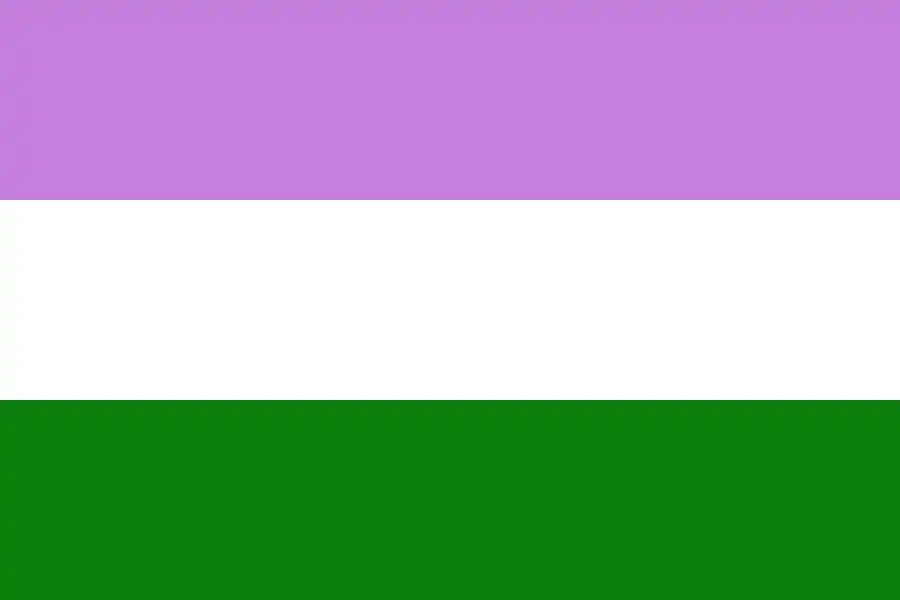
Pansexual Flag
The Pansexual flag is for pansexual people. People who are attracted to all sexualities, genders, and identities.
This flag has three (3) stripes.
The pink on the flag is for femininity, feeling or looking like a woman.
The yellow on the flag is for non-binary people.
The blue on the flag is for masculinity, feeling or looking like a man.
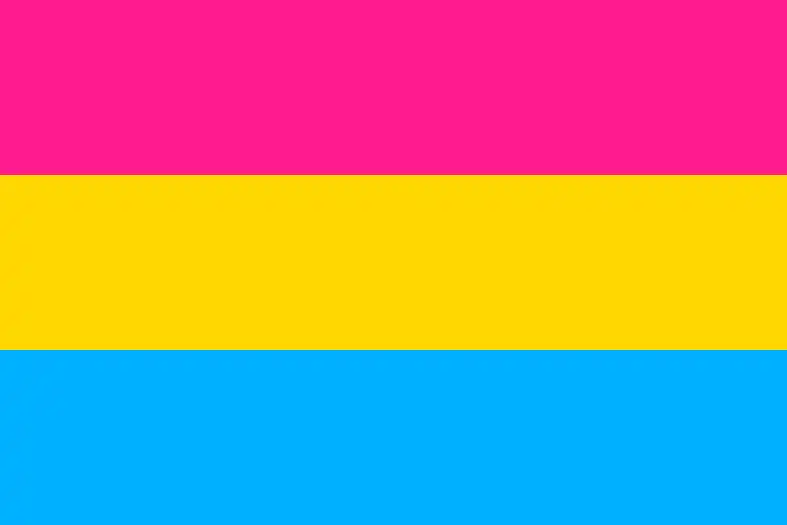
Gender Fluid Flag
The Gender Fluid flag is for gender fluid people. People who do not always feel like one gender.
This flag has five (5) stripes.
The pink on the flag is for femininity, feeling or looking like a woman.
The white on the flag is for all genders. When you mix all colours in the rainbow, it makes white.
The purple on the flag is for both male and female. When you mix blue (for male) and pink (for female), it makes purple.
The black on the flag is for agender people who do not feel like a gender. Black is the opposite of white.
The blue on the flag is for masculinity, feeling or looking like a man.
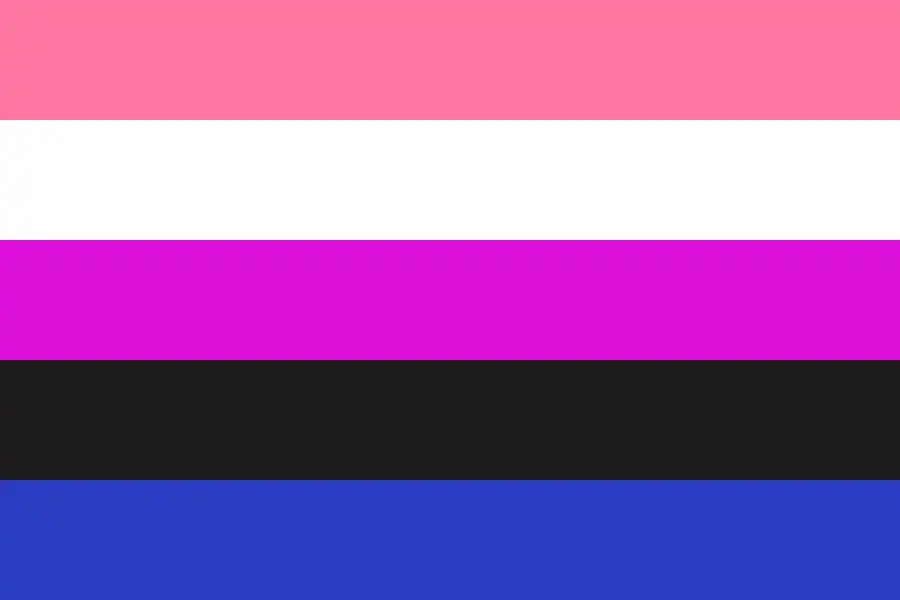
The Rainbow flag has been around for a lot of years, and has changed a few times since it was first created. Here is a very short history of all of the flag changes.
Gilbert Baker Flag – 1978
Gilbert Baker was the person who made the first Rainbow flag. He wanted to make something that the L G B T I Q A + community could use and wear with pride.
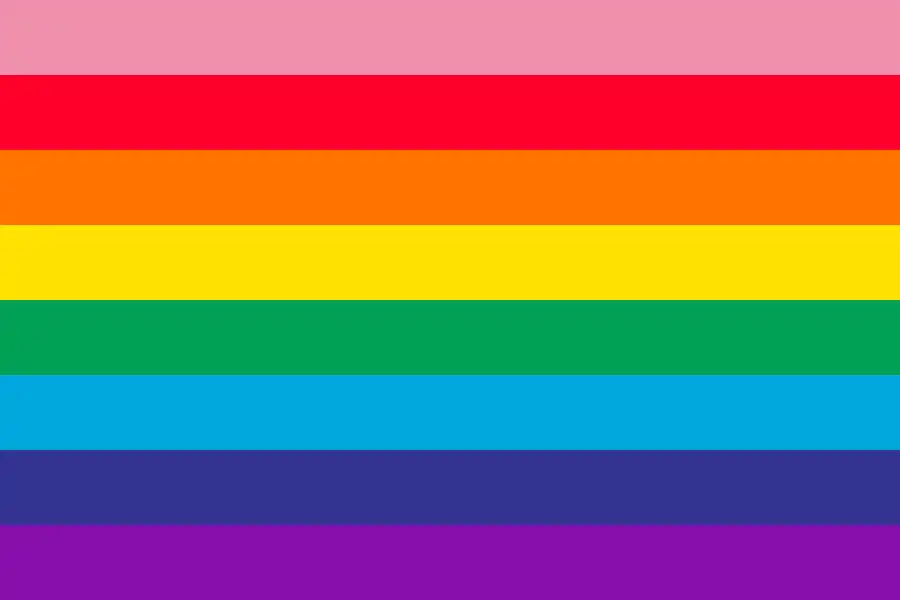
Rainbow Flag – 1979
As the Gilbert Baker flag got more popular, Baker had to change the flag a couple of times.
First, he removed the pink because the material was hard to find. This is called the ‘seven-colour Baker flag’.
After this, Baker decided to change the turqouise and indigo stripes into a blue stripe. This way there are six (6) even stripes across the flag. This is called the ‘six-colour Baker flag’, but more often just called the Rainbow flag now.
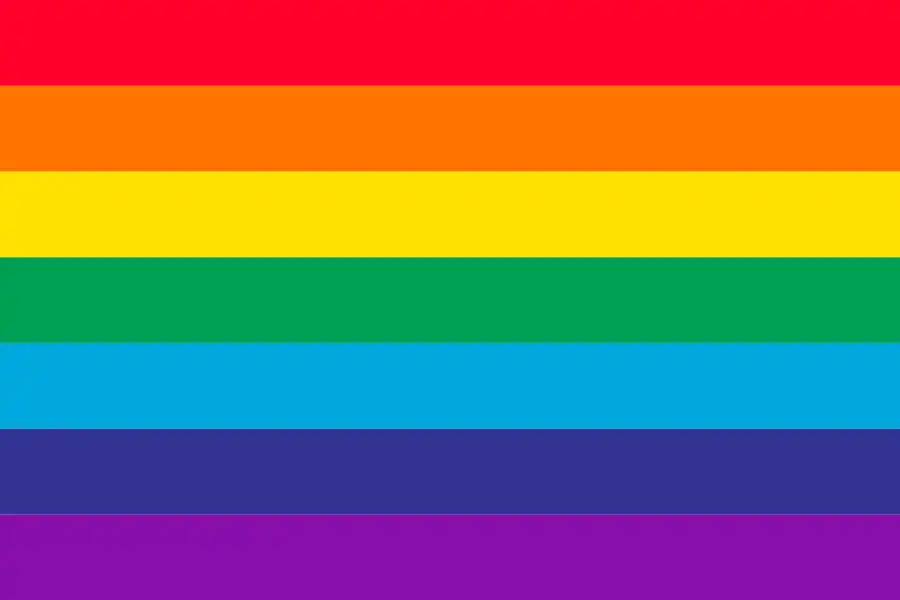
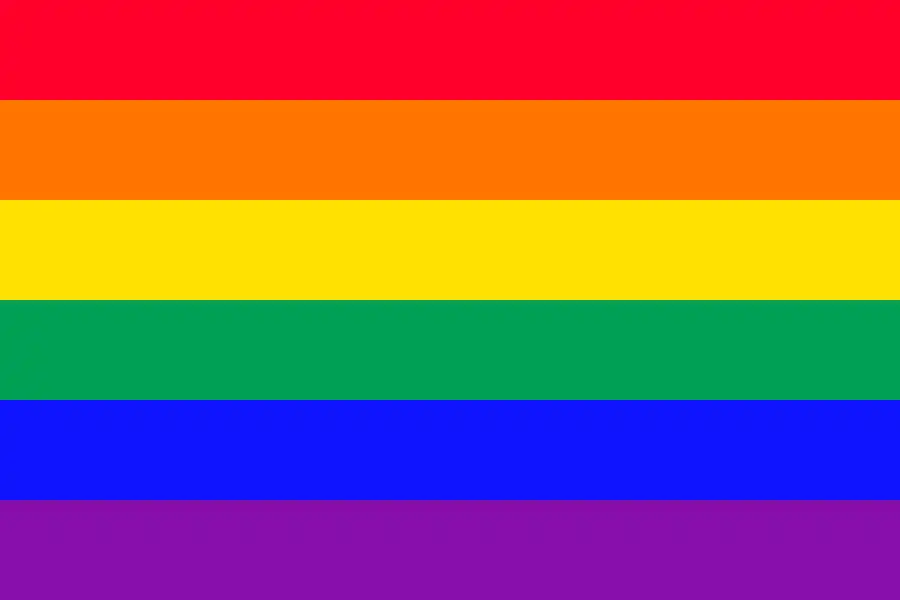
Philadelphia Flag – 2017
The City of Philadelphia in the USA started using this flag that was designed with brown and black stripes on the top of the flag.
The brown and black stripes are for people of colour in the L G B T I Q A + community.
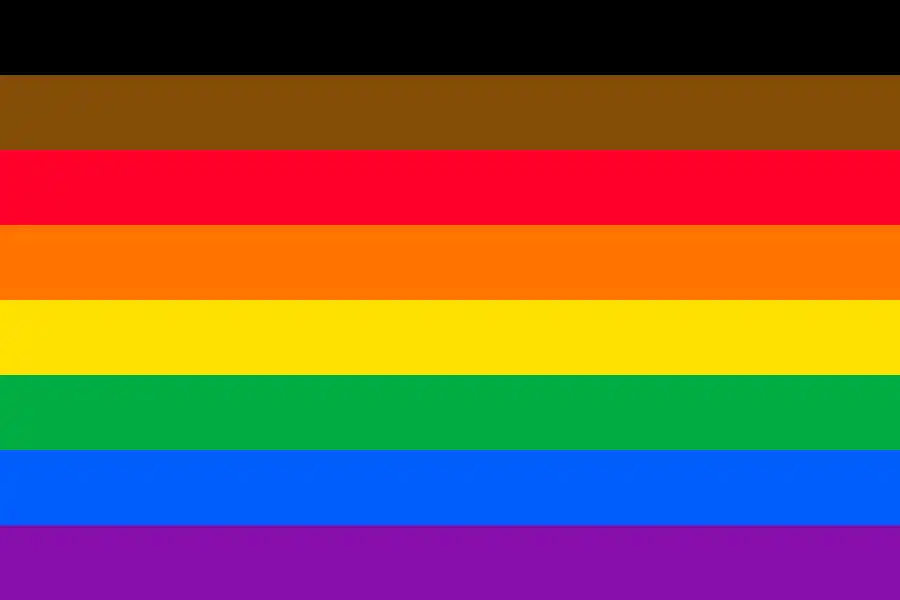
Progress Flag – 2018
A designer named Daniel Quasar created a flag that had all of the colours of the Philadelphia flag, and also included the colours of the Trans flag.
It is called the progress flag because the colours on the left look like arrows. The arrows show the changes that have happened over the years, and the change that still needs to happen.
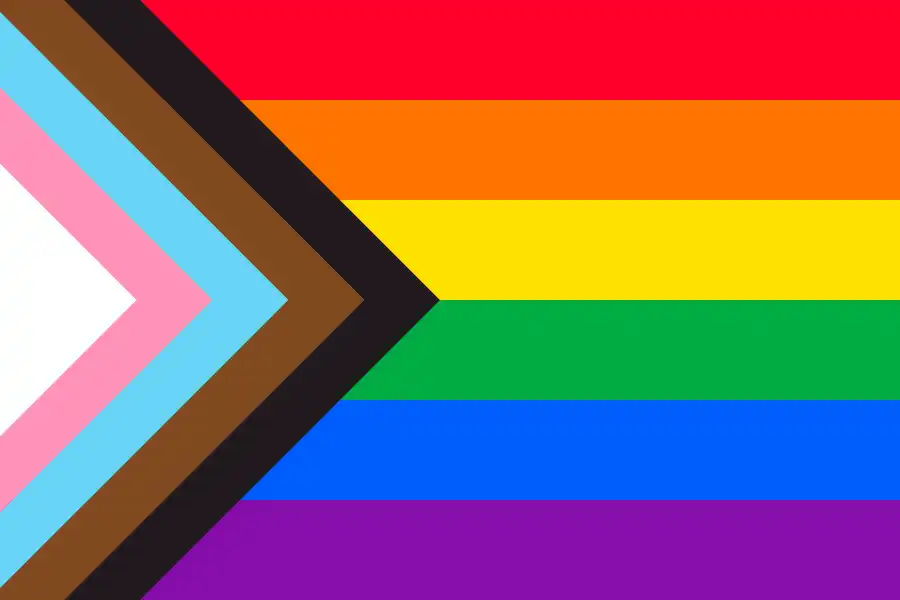
Unity Flag – 2021
A person named Valentino Vecchietti from Intersex Equality Rights UK designed a new flag that includes intersex people more.
They used the Progress flag, and put the colour and image from the intersex flag on the white space.
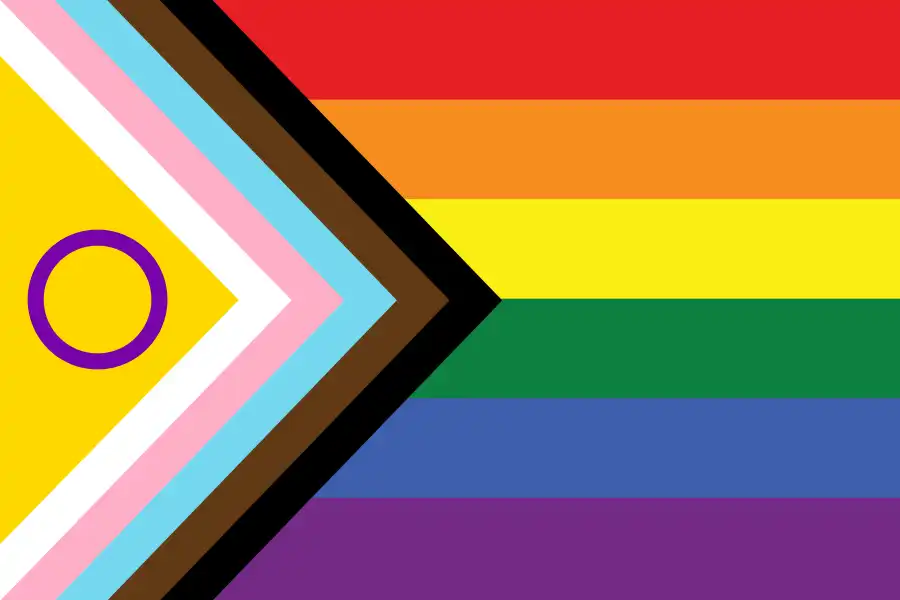
What will the flag look like in the future?
We do not know what the flag will look like in the future.
But we DO know that whatever it looks like, it will be fabulous and it will be inclusive of all L G B T I Q A + people.

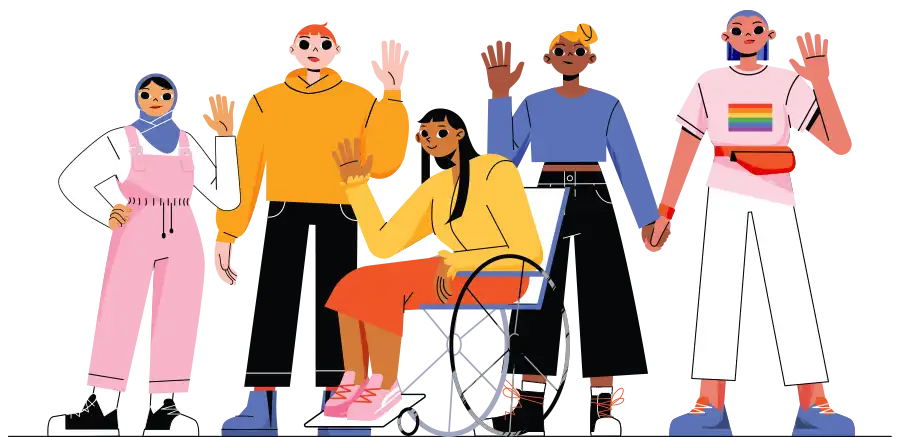
Tap the button below to download the “LGBTIQA+ Flags” brochure”
Tap the button below to see other things you can download
Tap the button below to see a word list that explains the words underlined and bold
Tap the button below for other website pages you might find interesting:

